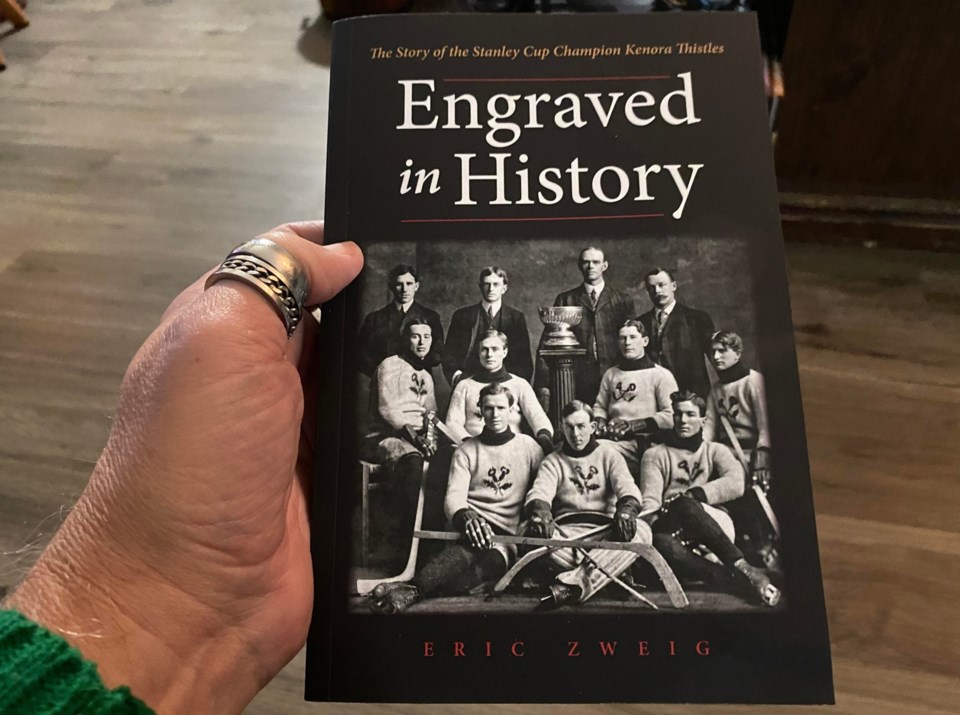YORKTON - The early history of the Stanley Cup has something of a wild west feel to it.
Teams regularly challenged for the cup in the early years which looking back were young guns going up against more famous teams, most leaving with the experience, but few taking home the silver cup.
Now decades later these teams are still enticing writers to delve into dusty newspaper files and other likely browning documents to pull together new stories.
For example, there is the fine Klondikers: Dawson City’s Stanley Cup Challenge and How a Nation Fell in Love with Hockey by Tim Falconer which was reviewed here and tells the amazing tale of a team’s odyssey from the frozen north in search of the cup. Sadly, Cinderella’s glass skate did not fit the Klondikers.
And then there is the recent Capitals, Aristocrats, and Cougars: Victoria's Hockey Professionals, 1911–1926 by Alan Livingstone MacLeod, which again was reviewed here and tells the story of a franchise long chasing the Stanley Cup.
Now we can add Engraved in History: The Story of the Stanley Cup Champion Kenora Thistles by Eric Zweig.
You have to be something of an NHL buff to even know the Thistles existed, let alone that they actually have won the Stanley Cup, but they did.
But, as the book states, “if you know the story of the Stanley Cup champion Kenora Thistles, you probably know it as one of the greatest underdog stories in Canadian sports.
“And it is.
“Sort of.
“In January of 1907, the Thistles, from a town of approximately 6,000 people, travelled to Montreal, Canada’s largest city with a population of close to half-a-million and defeated the defending Stanley Cup champion Montreal Wanderers.
“But it wasn’t as if a semi-pro baseball team from Pierre, South Dakota suddenly showed up in New York City and beat the Yankees in the World Series. No, the Kenora Thistles, in their heyday, were known right across North America as a hockey powerhouse. Yes, they were the smallest of small-market teams, even in 1907, but they reached their great success mainly with a group of homegrown superstars that were supported by their entire community.”
It sounds like a fine story – the book proves that it is – but why write a story that has to have a somewhat limited fan base simply based on how few people probably even recall the Thistles existed.
Zweig said he initially balked at the idea of taking on the project when approached, even though the Thistles had held him enthralled for years.
“I wanted to do it but thought ‘there is no audience for this’,” meaning the effort might go almost unknown, although he added he did recognize “it would be an important book for that area (Kenora).”
He said learned about the Thistles when he was “about 10-years-old” and then in the 1970s a small replica Stanley Cup with the team name on peaked his interest again.
“I still have that Stanley Cup. It sits on my bookshelf like a good luck charm,” he said.
So as he ruminated on the offer to write the book Zweig came to a realization; “if I don’t do it, and someone else wrote it I’d be kicking myself.”
Zweig did note in an interview with Yorkton This Week the process of research has been made easier these days as more and more newspaper have their old issues available online, which greatly simplifies research.
“The research resources are so much better for this (now),” he said.
And, with Engraved in History there was need to delve into as many sources as possible, said Zweig, explaining stories about a particular game might not always jive completely from paper to paper.
But the core of the story is simple enough as the book details; “the Kenora Thistles won the Stanley Cup on January 21, 1907. They defeated the Montreal Wanderers 8-6 to sweep a best-of-three series in two straight. Both games (as the third would have been) were played in Montreal. It was the Wanderers’ right as defending champions to play at home. Both teams took time out from their regular schedule to fit in the challenge series, which was a common occurrence during the era of natural ice and three-month seasons. With the Thistles’ victory, Kenora became the smallest town ever to win the Stanley Cup.
“They will likely be that forever.”
And the history was in the pages of those papers to be gleaned, as live sources related to the team have been dead for years.
“There were 19 members of the Thistles’ travelling party en route to Montreal in 1907,” detailed the book. “Nine were players, although only eight would dress for the Stanley Cup games, and just seven played. They rode to Montreal in their own special rail car displaying a huge banner with the words KENORA THISTLES. A few more made their own way from the small town to Montreal, Canada’s largest city at the time with a population approaching 500,000. Others from Winnipeg made the trip too. And while the small contingent of Thistles boosters would have been greatly outnumbered in the crowds of 6,000 to 7,000 people inside the Montreal Arena, the team had fans from coast to coast in Canada.”
And now that the book is on shelves, Zweig said he is a happy author.
“It’s satisfying. I think I’ve done a really good job of telling the story,” he said.
He’s right, this is a book a true NHL fan is likely to enjoy as it tells part of what has always made the game great, and allowed it to weave so deeply into our culture.
Zweig said he also believes the story resonates with today’s hockey.
“Even if you don’t think you’re interested . . . There’s more in common with it now than you think,” he said.

